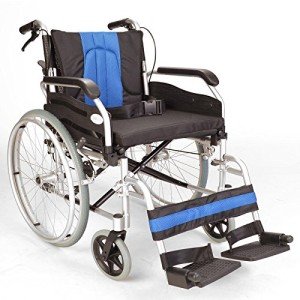20 Bariatric Wheelchair 24 Inch Seat Websites Taking The Internet By Storm

Additional Wide Bariatric Wheelchair With 24" Seat
Frame
Wheelchairs are typically produced in a basic width of 16" (narrow adult), 18" (standard grownup) or 20" (large grownup). Nevertheless, some wheelchair users need a seat width wider than these standards. These extra broad bariatric wheelchairs are typically fitted by an expert and based upon the user's measurements.
In order to get the most comfortable and safe ride for travelers, it is crucial that wheelchairs are effectively sized. This means that the wheelchair must be able to accommodate the user's size while being able to maneuver in tight areas. This is why BriteLift provides personalized cars to transport wheelchair guests. This includes vans that can safely drive and maneuver big wheelchairs, enabling them to feel safe and comfy in every trip. This is the only way to supply the most reliable transportation for wheelchair guests.
Seat
Bariatric wheelchairs are bigger than standard wheelchairs and are created to accommodate people who are heavier or larger. This additional broad bariatric wheelchair from Medline includes a 24" seat and a carbon steel frame with rust- and chip-resistant chrome plating. The wheelchair has tool-free push-button adjustable footrests and easy-to-clean vinyl upholstery. It can support approximately 500 pounds.
When choosing on the right wheelchair width, it is very important to measure the user sitting normally on a flat surface area across their largest part of the lap which is usually their hips. It is also advised that you use a yardstick instead of a measuring tape as it tends to provide a more precise measurement. If the user will be wearing a winter coat then an extra 2" must be contributed to the measurement of their seat width.
Weight Capacity
A bariatric wheelchair is typically bigger and heavier than standard wheelchairs. This is why they need more mindful maneuvering. Motorists need to be trained in handling these travelers. Furthermore, vehicles need to have enough room for these chairs along with ramps and wheelchair lifts. In addition, they need to understand how to arrange these rides in advance.
When deciding on the chair width, it is necessary to determine the user's best point in the seat, which is generally the hips. Many wheelchair producers likewise offer a yardstick that can be used to aid with this measurement. When measuring a person's width, it is best to take the measurement straight throughout and not cover the tape around their hips which can give an incorrect reading.

In some cases, the largest part of an individual's thighs might be wider than their hips so this should be thought about when choosing the chair width. In lightweight bariatric wheelchair , it is in some cases required to include an extra 2" to the chair width.
In general, the weight capacity of a bariatric wheelchair should not be gone beyond under any circumstances or severe injury may result. When using the chair, always make sure that it is on a steady and level surface area with front casters pointing forward and wheel locks engaged. In addition, never lean or move the center of mass while sitting in the chair.
